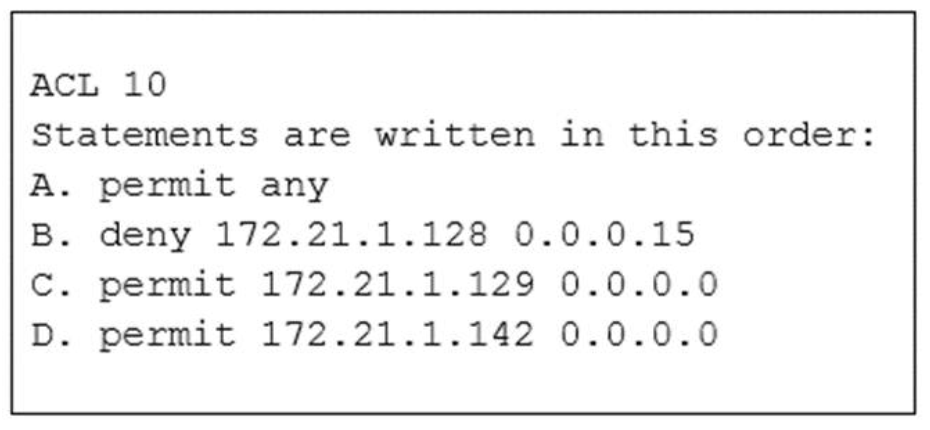Question:
Refer to the exhibit. Statements A, B, C, and D of ACL 10 have been entered in the shown order and applied to interface E0 inbound, to prevent all hosts (except those whose addresses are the first and last IP of subnet 172.21.1.128/28) from accessing the network. But as is, the ACL does not restrict anyone from the network. How can the ACL statements be re-arranged so that the system works as intended?

- ACDB
- BADC
- DBAC
- CDBA
Explanation: Routers go line by line through an access list until a match is found and then will not look any further, even if a more specific of better match is found later on in the access list. So, it it best to begin with the most specific entries first, in this cast the two hosts in line C and D. Then, include the subnet (B) and then finally the rest of the traffic (A).
Exam with this question: CCNA v3.0 (200-125) Study Guide – Exam Dumps
Please login or Register to submit your answer
